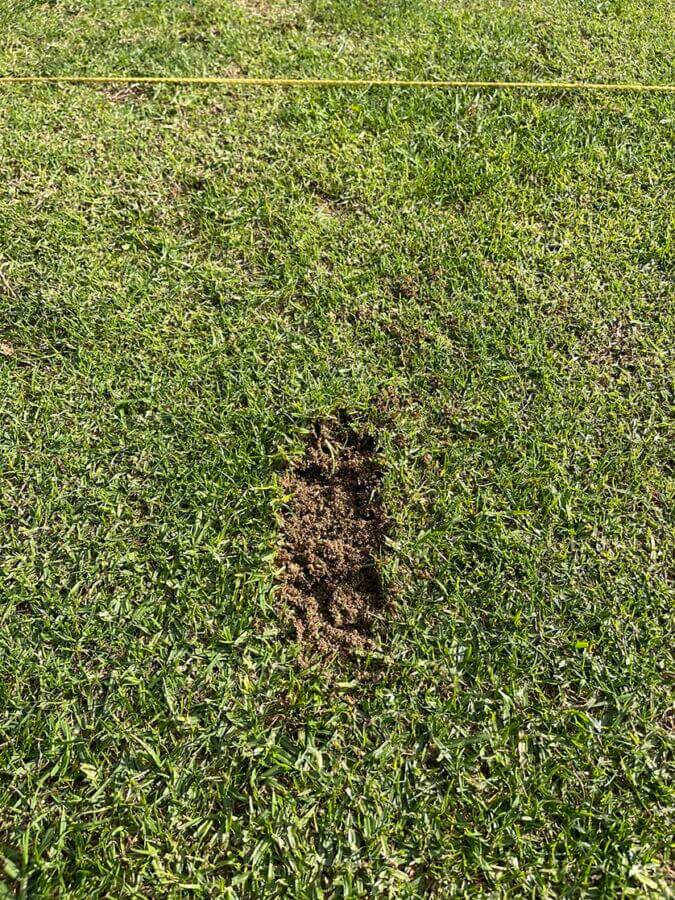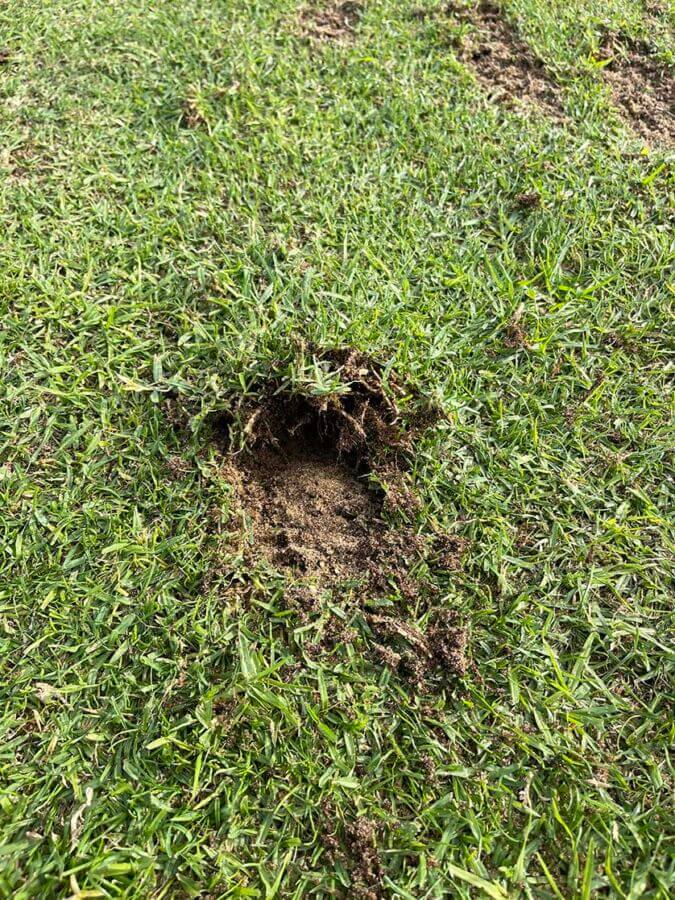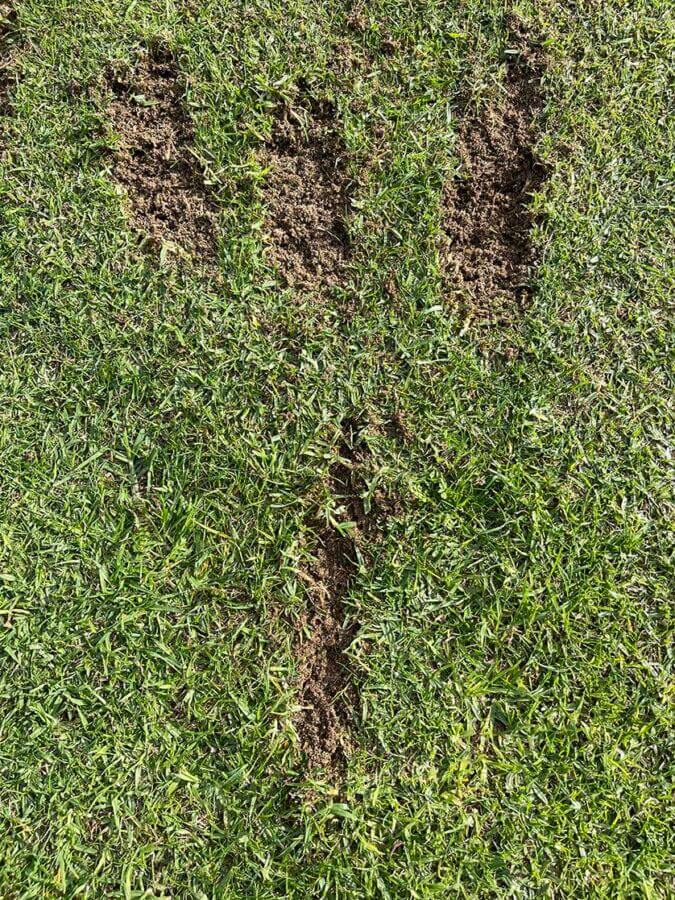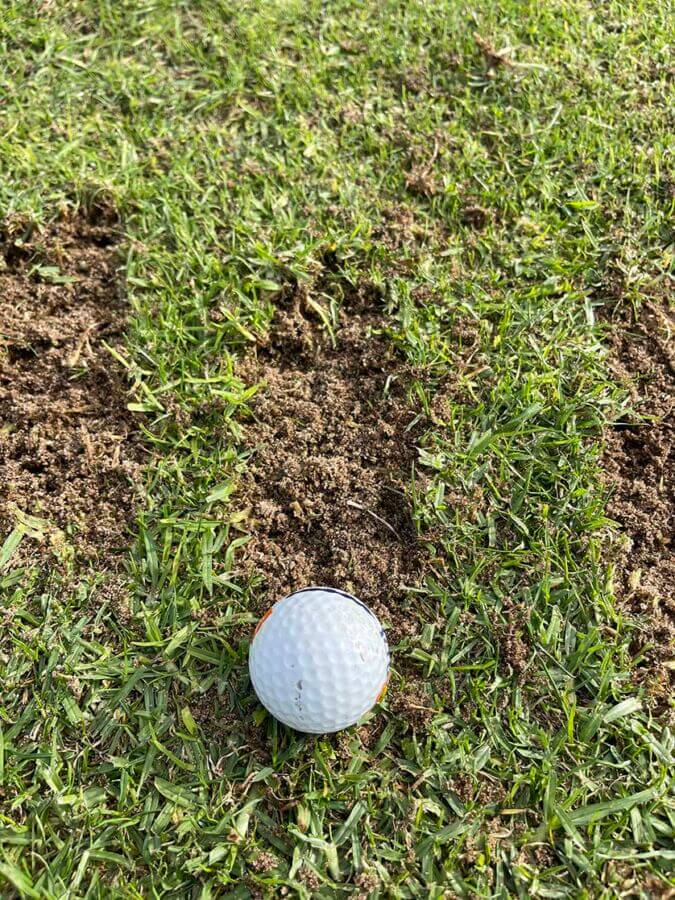Understanding impact from your divots
– March 10, 2023

Your divots are a great indication of what is going on at impact. Whenever possible, practise from grass so you have more chance to learn from your divot pattern. After hitting a particularly good or bad shot, it is a great time to assess your divots on the course.
The ideal divot will be shallow, starting just after the ball, and an even width throughout, as represented in image 1.

The length of your divot will vary depending on the club used and the ground conditions you are playing on.
The next step in looking for a good divot is, where does it point relative to the target? A divot that is heading towards the target is a good starting point, but, of course, if you like to play with a fade or draw (or that’s what you’re intending for a particular shot), the divot line will alter slightly.
If you would like to play a draw, you will need your divot line going slightly to the right of your target and, of course, for a fade, the opposite, going slightly left of your target. Left-handed golfers, please reverse this advice.
In this example, you can see divots for a draw and fade alongside the original ‘square’ divot (image 2).

Now let’s discuss the divot patterns that are common and that you are looking to avoid.
The steep, choppy one pointing left indicates an oversteep, out-to-in attack on the ball (image 3).

The narrow, thin divot indicates excessive clubface rotation, generally trying to correct an open clubface that leads to a slice. Here you can see it compared to the other divots (image 4).

It follows then that if our divots are a good source of learning, we can again work backwards and actually practise with the intention of making a good divot. One of the ways you can do this is, find a good divot and put your ball at the start of it and have the intention of extending the original divot (image 5).

An alternative way is, place a tee peg in the ground 3-6 inches in front of your ball on the line you want to swing and aim to strike the ball and keep your clubhead travelling to also knock the tee peg out of the ground. If you can do this, you will help your swing path.
If you have any questions or would like to find out more about my coaching in the Algarve and UK, please visit www.scottcranfield.com or contact me on [email protected]
For more tips to help your golf visit, go to https://www.facebook.com/intuitivegolf
By Scott Cranfield
Scott Cranfield is a PGA Master Coach. For over 30 years, he has dedicated his life to helping golfers achieve their goals through a natural approach that embraces the true laws of how the human mind and body work. Scott’s unique approach has led to the creation of multiple training programmes, and the experience of coaching every standard of golfer from complete beginners through to Ryder Cup players. As well as enjoying a long TV career with Sky Sports and Setanta TV, in 2011 Scott was honoured with the award of PGA Master Professional & Coach.
Read more:
Golf Tips: How to make good golf shots and control de ball
The importance of mind & body to the perfect golf swing
Want to know the secret to better golf? It’s all in the feet










